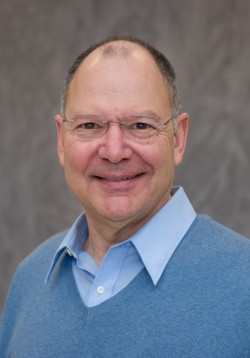Under the leadership of CE Professor Dr. Lawrence F. Kahn, the American Concrete Institute (ACI) has recently completed work on an important new building repair code.
 The publication of 562-13 “Code Requirements for Evaluation, Repair and Rehabilitation of Concrete Buildings” represents several years of research and revision among Kahn, his fellow committee members, and officials from ACI and the International Concrete Repair Institute (ACRI). The ACI has described the new code as a “must-have document for structural concrete repairs,” because it defines parameters for evaluating repair requirements.
The publication of 562-13 “Code Requirements for Evaluation, Repair and Rehabilitation of Concrete Buildings” represents several years of research and revision among Kahn, his fellow committee members, and officials from ACI and the International Concrete Repair Institute (ACRI). The ACI has described the new code as a “must-have document for structural concrete repairs,” because it defines parameters for evaluating repair requirements.
“[It determines whether] the building can be repaired based on the ACI 318 version used in the original design, or if the repair needs to comply with the current ACI 318. The code provides rules for determining strength of in-situ material, performing structural analysis, designing repairs for strength and durability, requirements for stability and shoring of construction, and inspection and testing of repairs. Commentary provides application guidance as well as references for additional information.”
An ACI, ASCE and Masonry Society Fellow, Kahn served for six years as the chairman of Committee 562 during the initial development and publication of the code. He has worked quite closely with the current chair of that committee, Dr. Keith Kessner, to revise and publish the final code.
Kahn noted that repairs to concrete structures in the United States account for about $20 billion in construction costs annually, $8 billion of which is due to corrosion damage. He said the issuance of this first-ever material-specific code shows promise in helping the industry improve its performance.
“Our industry in repair is a substantial industry,” he said. “In terms of repair performance, the [Army] Corps of Engineers has estimated that about 50 percent of repairs are not performing satisfactorily. That’s due to design errors, construction errors and especially in the selection of appropriate repair materials. Further, longevity of repairs is in question…It has been found that 80 percent of repairs remain satisfactory after five years. That means 20 percent are failing very early.”
The new code was heralded by industry and academic professionals at the recent ACI conference, held in Minneapolis.
